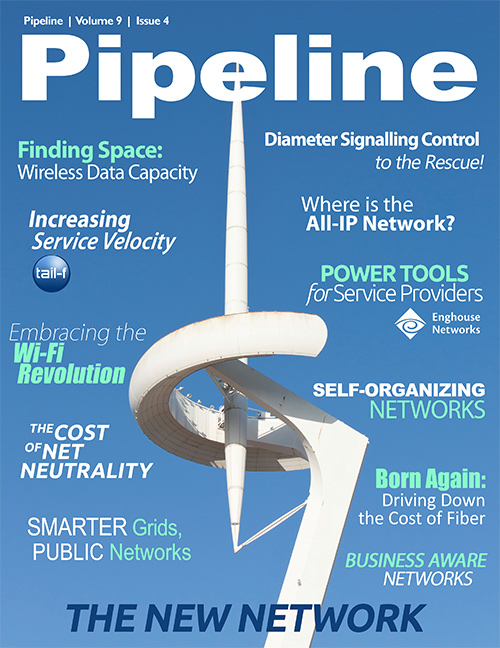Where is the All-IP Network?
Does All-IP really rule all?
In a word, yes, and here's why: A single network implementation promotes scale, dramatically reduces complexity, erases international communication barriers, and opens up an infinite number of logical service pairings and converged offerings that are freed from transport requirements and can originate from countless providers. In terms of expense, this will eventually translate into a profound reduction in costs.
Take, for example, AT&T, which has a massive footprint of legacy infrastructure, network equipment and real-estate that will be liberated when the transition to all-IP is complete. According to the Voice Communication Exchange Committee (VCXC) a DC-based nonprofit advocating for the acceleration of all-IP (and the death of PTSN by 2018), the transition to all-IP will shrink the network equipment by more than 90 percent. Companies like AT&T, that have accumulated telecom gear and real-estate for more than 100 years, will experience a massive ($25 billion+) windfall as this legacy is divested.
“AT&T's portfolio goes back more than 100 years even as commercial real estate appreciated five-fold since the 1970's,” writes the VCXC. “All-IP networks require both less equipment and far fewer points of interconnection between networks. The transition of the AT&T's core network to all-IP already started emptying buildings, but most of the benefits await adoption of the IP-IP interconnects necessary to support HD voice."Any service provider who moves from PTSN to VoIP will realize a huge reduction in equipment. “Comcast's all-IP network supports 10 million Digital Voice customers from five data centers,” writes Bell Labs VoIP pioneer Daniel Berninger, of VCXC. “Half a rack of VoIP network equipment replaces a room full of Class 4 and 5 of circuit switching equipment. Equipment sheds replace the contents of entire buildings.”
For wireless service providers without a wireline legacy, there are huge cost reductions in the wireless environment enabled by all-IP, namely the transition to LTE networks. However, wireless service providers, even those (except for SK Telecom) who have transitioned to LTE, still operate two different network architectures, circuit-switched for voice and packet-based for data. Once this redundancy can be converged, wireless networks will become much more consolidated, cheaper to operate, more fully featured, and interoperable. And in the face of these potential cost reductions, the old way of doing things doesn't make make much sense. "Everything's going to be all-IP," opines Andy Ory; "Everything else is too expensive."





















